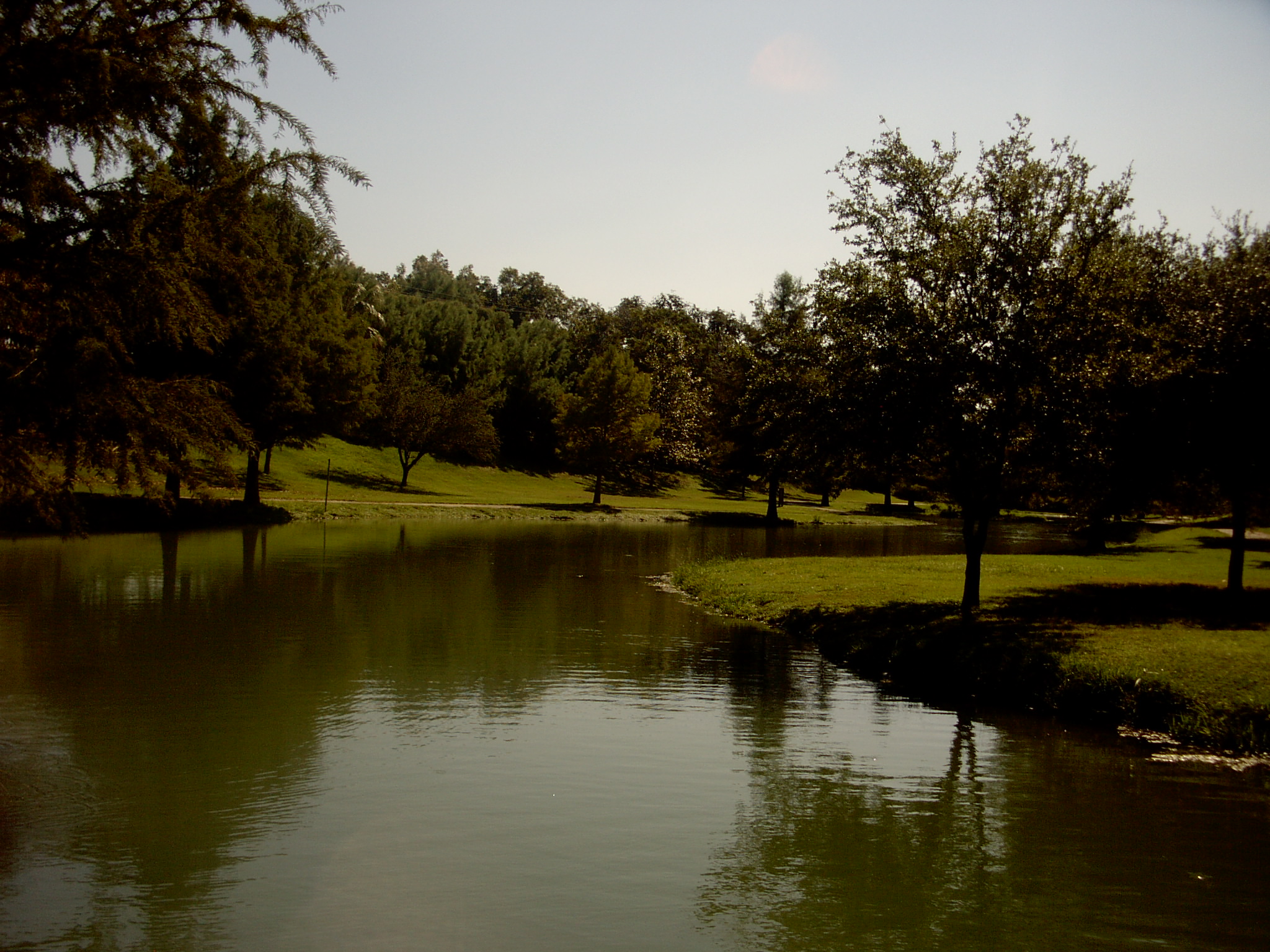

|
Mildred Hilbrich |
Fall, 2005 |
|
U.S. History 1302 |
R. Hines, Instructor of History |
More Histories of Small Towns in South Texas
Interview with Ms. Nancy Feely, resident of Uvalde, Tx.
In 2005, Uvalde is not known for train and bank robbers, but in 1914 to 1929, the Newton brothers, Willis, Willie(Doc), Jess, and Joe started a career in train and bank robbing. They first started breaking into stores at night when they were very young. They progressed to the big stuff soon enough. The first train robbery was committed by Willis and a friend in Cline, Tx. That first robbery netted them $4, 700. Their last train robbery would net them $3 million, which was in Rondout, IL.. The Newtons would go down in history as taking more money, bonds, and bank notes than any other famous gangs. They robbed 87 banks, and six trains in their notorious careers, hauling off more loot than the Dalton boys, Butch Cassidy, Jess and Frank James, and all the other outlaws put together. All brothers spent time in prison at various times in their lives. (The Handbook of Texas Online: Uvalde, County http://www.mrgdc.org/cog/cog_region/uvaldecounty.php).
ORIGINS:Uvalde sits at “America’s Crossroads,” U.S. 90 and U.S. 83, between San Antonio and the International Amistad Reservoir on the United States-Mexican border. The Southern Pacific Railroad parallels U.S. 90, and connects Uvalde with Knippa and Sabinal to the east and Cline to the west. These highways run along the waterways of the Frio, Leona and Nueces rivers. As of 2002, Uvalde’s population was 16,729.(Uvalde Area Chamber of Commerce).
Early history of Uvalde: West and Southwest of San Antonio is the Upper Nueces Country. It extends from the Medina River to the Rio Grande and from the Edwards Plateau to the Northern boundary of Webb County -in area some 12,000 square miles. Its topography is simple: violet-crowned mountains at the north and below, rolling prairie. In the mountains the streams run clear, on the prairie much of the flow goes underground and the rivers are normally long placid pools. The region is semi-arid; and mesquite, cat’s claw, huajilla, and prickly pear on the prairie, live oak, pecan, and cypress along the rivers, and cedar in the mountains are the important native plants. The first settlement was the mission of San Lorenzo de la Santa Cruz, founded in 1762, near the present town of Camp Wood. A few weeks later the mission of Nuestra Senora de la Candelaria was built at the present site of Montel. Father Diego Ximenez, president of the missions of the Rio Grande, and Captain Felipe Teran founded these missions to try to convert the Apache and the Lipan Indians. They were not successful, the Apaches and the Comanches continued to be dangerous and troublesome to the settlements. Spain and Mexico controlled the Upper Nueces Country for 300 years. Because the Spanish and Mexicans weren’t making much progress, settlements were abandoned. The Anglo-Americans and Germans, were to be more successful. (Smith, Thomas Tyree).
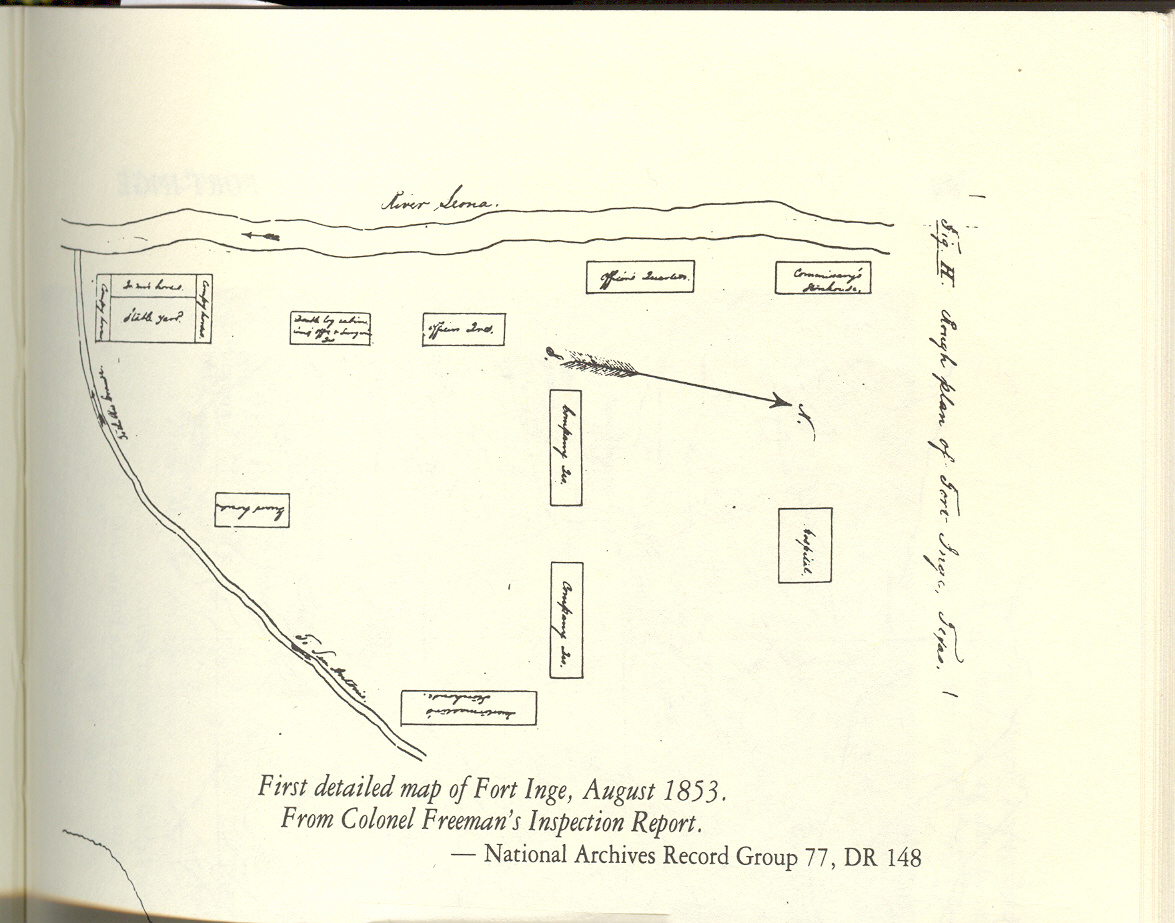
Fort Inge: Capt. Seth Eastman, of the 1st. Infantry, was assigned the duty of establishing a post at or near the ford of the Leona where it is crossed by Woll’s route from San Antonio to Presidio del Rio Grande. On March 13, 1849, Capt. Eastman arrived at the base of Mount Inge with approximately 30 men of Company I. Capt. Eastman’s post on the Leona was strategically placed in the center of the Southwestern Texas frontier, midway between the largest city, San Antonio, and the border. It was the duty and job of the soldiers to intercept and prevent bands of Indians, especially Lipans and Comanches, from raiding settlements near San Antonio. This post was considered good duty. It was a beautiful place with plentiful shade, wood, water, and game. It was at first called “Post on the Leona” but was eventually renamed Fort Inge, after Lt. Zebulon Inge, 2nd.Dragoons, who was killed at the Battle of Resaca de la Palma in the Mexican War. Many famous soldiers had temporary duty at Ft. Inge, including Robert E. Lee, Albert Sidney Johnson, Lew Wallace, and Michael Van Buren. The fort served and protected the area and the people for 20 years, closing in March of 1869. Ft. Inge Park was given to Uvalde County by Joe Hunter, who had acquired the land from the Will Hoag family, frontier settlers. The area was originally part of a one-league land grant owned by Roswell Gillette in the 1830's. In 1997, the land was deeded to the Uvalde Historical Commission, Inc. for purposes of historic preservation. (Smith, Thomas Tyree).
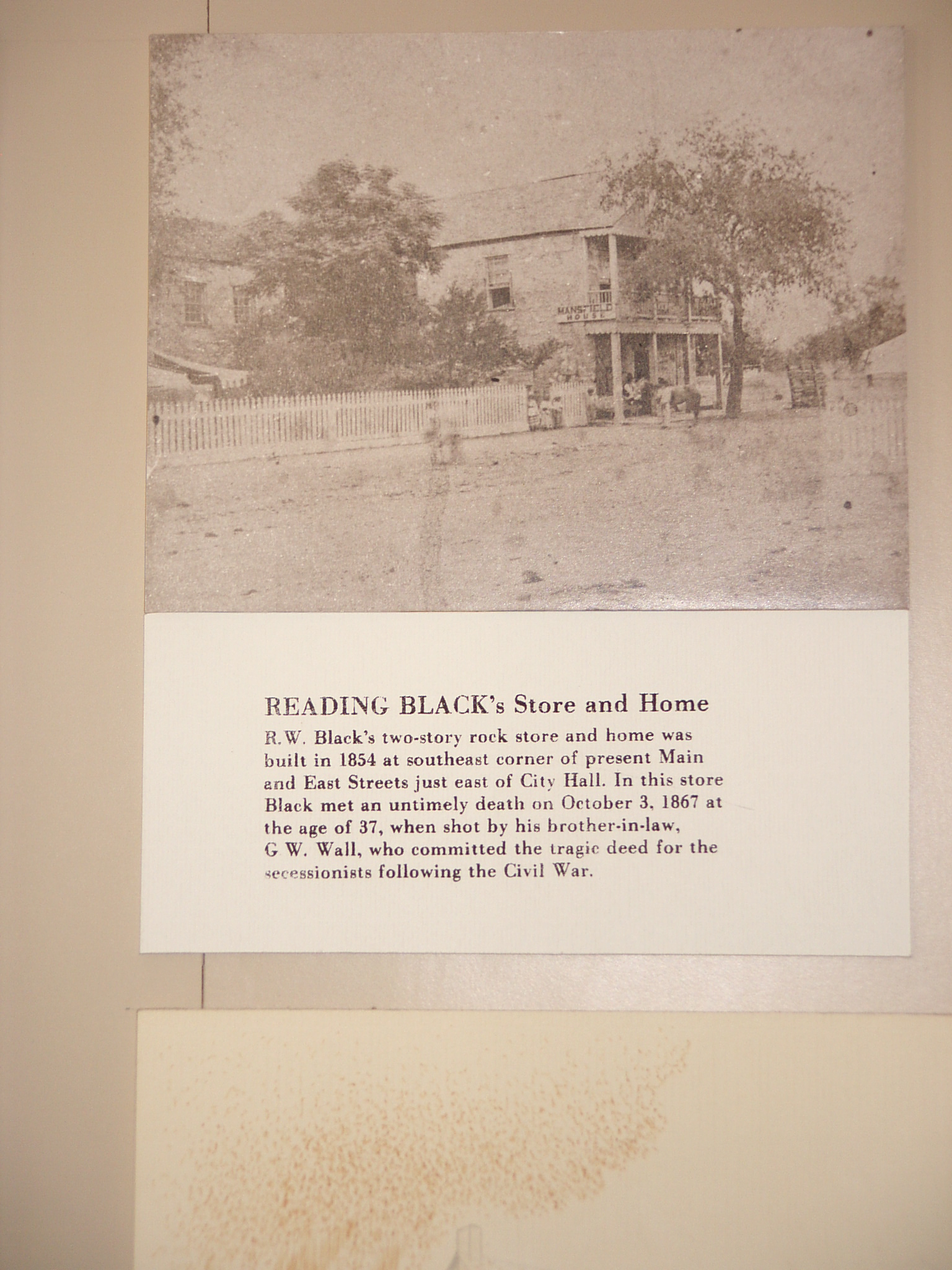
Founding Father: On April 14, 1853, Reading Wood Black, then 22, bought an undivided half league and a labor for $2,500. In Bexar survey 71, the land is near the head of the Leona River. A large part of Uvalde is built on this land. Sometime after 1851, the Black family, who lived in Springfield Township, Burlington County, New Jersey, received a visit from their cousin Capt. William Reading Montgomery, of the 8th Infantry. Capt. Montgomery had been serving at Ft. Gates, TX. The visit was to change and influence the life of 21-year-old Reading. Young Reading was determined to go west, where it seemed to him that it was a land of boundless promise. Despite family ties and disapproval from his father, Reading made plans to go to Texas. He sold his land holdings and arranged to sell his farm and induced his friend Nathan L. Stratton to go with him; and in the spring of 1852 they made their way to Texas. Shortly after buying this property, Black managed to direct across it the San Antonio-California road. In less than two years he had started a business, made a garden and orchard, opened a lime kiln, and two rock quarries, built a home and straightened the public roads to the west and east; had acquired 1,000 head of sheep and traded horses and mules. Black hired a surveyor, William C. A. Thielepape, to lay out the town. Work started on May 2, 1855. Using the Eagle Pass road (later Main street) as the axis, the surveyor divided the town into 464 lots, four plazas, a park, a garden, a school house square, and a cemetery. Eleven larger tracks were plotted north of the town. The seven streets,- Leona, Mesquite, Oak, Nopal, Main, Garden, and Calera -ran east and west; and five,-Park, High, Getty, Camp, and Wood-ran north and south. Getty and Main were the principal thoroughfares, and intersected at the center of the plazas. Thielepape finished on May 9th, and was paid $58 for his work and expenses. The town was called Encina, named after the live oak trees that covered it, but was renamed Uvalde a year later when the county was organized. (A Proud Heritage 193-94).
ECONOMY:Uvalde’s economy started out with agriculture, and cattle ranching. The seeds of the ranching industry were in great part sown by the maverick cattle left by the Spaniards. Uvaldean cowboys and ranchers crossbred these cattle with imported English Devon and Durham bulls to produce cattle well suited for the long cattle drives from the region. In the 1880s, the Angora goat was brought to Uvalde, and it became one of Uvalde’s biggest industries. Now, in present day Uvalde, the economy’s base is more than 50 percent agriculture; cattle, sheep, and goat ranching, is a big part of the economy. Uvalde has two gravel mines that are an important source of revenue, tourism and Uvalde’s Health facilities(The Handbook Online of Uvalde County).HISTORICAL SIGNIFICANT STORIES:
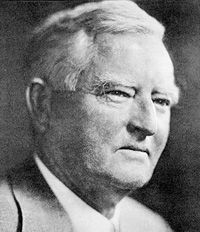 The Famous: Uvalde is the home of former Vice President John Nance Garner. Vice President
Garner was a member of the State House of Representatives from 1898 to 1902; was
elected as a Democrat to the 58th and to the 14 succeeding
Congresses (March 4, 1903 to March 3, 1933); served as minority floor leader
(71st Congress) and as Speaker of the House of Representatives
(72nd) Congress; reelected to the 73rd Congress on November
8, 1932 and on the same day was elected Vice President of the United States on
the ticket headed by Franklin D. Roosevelt. He served as Vice President from
March 4, 1933, to January 20, 1941. Vice President Garner lived in Uvalde until
his death on November 7, 1967. He is buried in Uvalde Cemetery. (Garner, John
Nance-Biographical Information).
The Famous: Uvalde is the home of former Vice President John Nance Garner. Vice President
Garner was a member of the State House of Representatives from 1898 to 1902; was
elected as a Democrat to the 58th and to the 14 succeeding
Congresses (March 4, 1903 to March 3, 1933); served as minority floor leader
(71st Congress) and as Speaker of the House of Representatives
(72nd) Congress; reelected to the 73rd Congress on November
8, 1932 and on the same day was elected Vice President of the United States on
the ticket headed by Franklin D. Roosevelt. He served as Vice President from
March 4, 1933, to January 20, 1941. Vice President Garner lived in Uvalde until
his death on November 7, 1967. He is buried in Uvalde Cemetery. (Garner, John
Nance-Biographical Information).
Governor Dolph Briscoe Jr., is rancher, banker, civic leader, and is majority stockholder of the First State Bank of Uvalde. The bank is famous for its collection of valuable art, antiques and sculpture that Gov. Briscoe and his wife Janey collected through their travels all over the world. Gov. Briscoe served in the Texas House of Representatives from 1949 to 1957, and was Governor of Texas from 1973 to 1979. Gov. Briscoe has an office at the bank and still works on a regular basis. He resides in Uvalde. (Briscoe, Dolph Jr. -Biographical Information). HISTORICAL LANDMARKS: Historical
 Landmarks: Uvalde has many Historical Landmarks; Pioneer Cemetery, Uvalde City
Cemetery, Uvalde Plaza, Grand Opera House, The National Fish Hatchery, Garner
Army Air Field, The John Nance Garner Museum, Fort Inge, Jardin de los Heroes
Park, Early Texas Wagon Yards, Home of Pat Garrett, and of course, the Cross
Roads of America, the intersection of the two largest highways in the United
States. Highway 90 goes from Florida to California, and Highway 83 goes from
Canada to South America.
Landmarks: Uvalde has many Historical Landmarks; Pioneer Cemetery, Uvalde City
Cemetery, Uvalde Plaza, Grand Opera House, The National Fish Hatchery, Garner
Army Air Field, The John Nance Garner Museum, Fort Inge, Jardin de los Heroes
Park, Early Texas Wagon Yards, Home of Pat Garrett, and of course, the Cross
Roads of America, the intersection of the two largest highways in the United
States. Highway 90 goes from Florida to California, and Highway 83 goes from
Canada to South America.
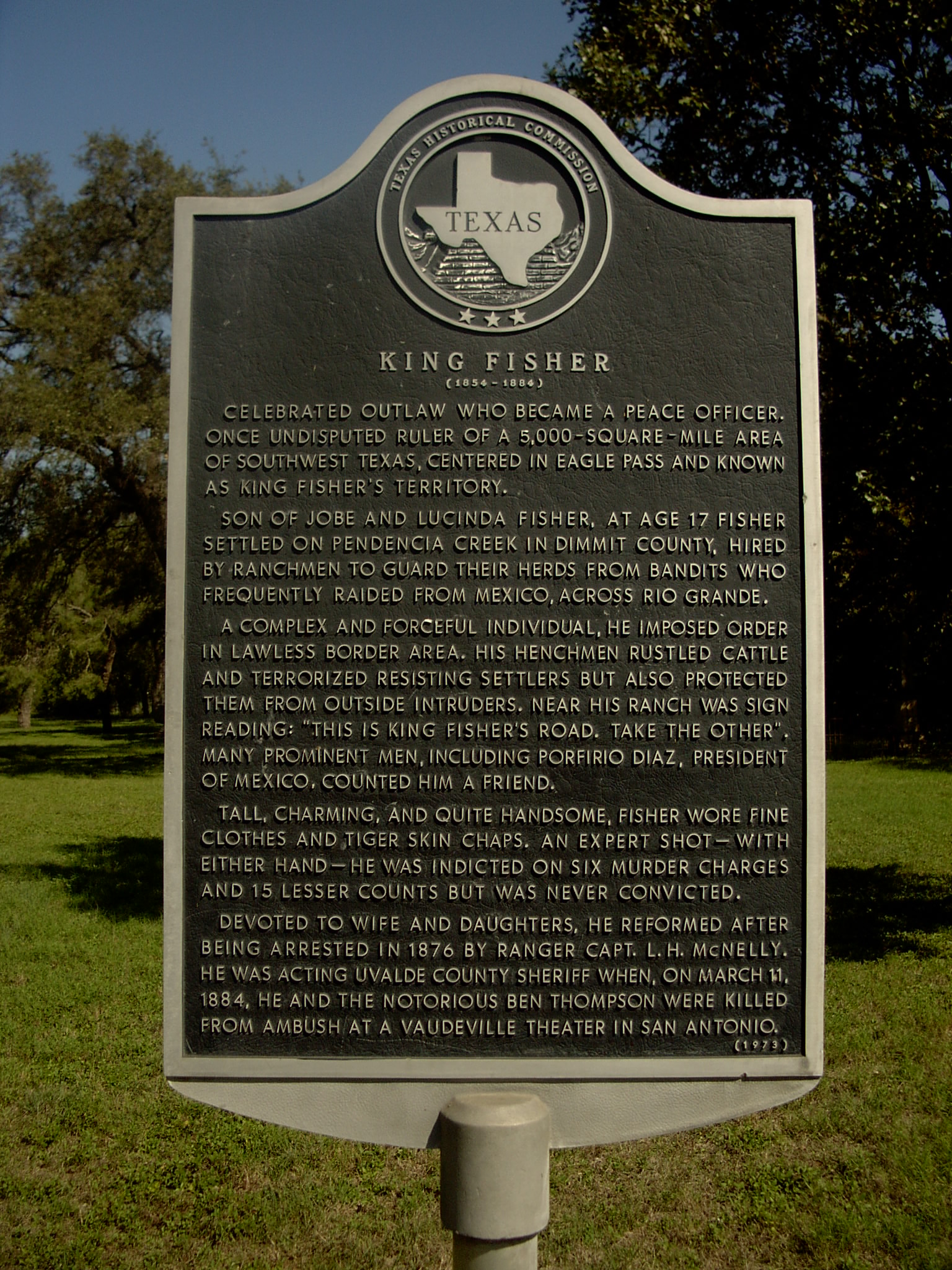
UNUSUAL EVENTS: King Fisher, celebrated outlaw who became peace officer, has a Historical Marker in Pioneer Cemetery. Once an undisputed ruler of a 5,000 square mile area of Southwest Texas, centered in Eagle Pass and known as King Fisher Territory. At age 17, he was hired by ranch men to guard their herds from bandits. He imposed order in lawless border area. His henchmen rustled cattle and terrorized resisting settlers, but also resisted outside intruders. He was indicted on six murder charges and 15 lesser counts, but was never convicted. He reformed after being arrested in 1876 by Ranger Capt. L.H. McNeely. He was acting Uvalde County Sheriff when on March 11, 1884, he was killed by ambush at a Vaudeville theater in San Antonio. (Texas Handbook Online Uvalde, County).
Uvalde has 28 churches of all denominations, nine (UCISD) schools, two private schools, one charter school, and two colleges, Southwest Texas Jr. College, and Sul Ross State University. Uvalde has a beautiful library: El Progreso Memorial Library, Archives and Museum, A&M Research Center, and Garner State Park. Uvalde has 63 trees in the city right of way, it is a migratory path for birds and monarch butterflies.
Uvalde is a city with a proud history and it’s citizens have done a great job in maintaining it’s uniqueness, sense of patriotism, and it’s historical value intact. The founder, Mr. Black, would be proud of his town.
The Handbook of Texas Online, Uvalde County. Both of these websites have a wealth of information on Uvalde, Tx. and Uvalde Co.
Feely, Nancy. Personal interview. 26-September-2005.
Many thanks to Ms. Susan Anderson, Librarian of the El Progreso Memorial Library, who recommended valuable sources to me for this project.
Interviewee: Ms. Nancy Feely, who gave of her time and knowledge of her town, Uvalde. Many, many thanks, you made my project fun and interesting.
`El Progreso Club. A Proud Heritage. San Angelo: Taylor, 1975 This book tells the story of the founding father and the people that came after. Very interesting and entertaining reading.
Batten, Jim. Article. San Angelo Standard Times. San Angelo, Texas. 03-05-1968. El Progreso Memorial Library. Uvalde, Texas.
Finley, Florence. Oldtimers of Southwest Texas. Uvalde: The Hornby Press, 1957 This book tells the story of Uvalde and the surrounding towns and counties from the perspective of its citizens. Oldtimers stories, very helpful in understanding the early settlers.
Moore, Ike. The Life and Diary of Reading W. Black: A History of Early Uvalde.
El Progreso Club .Uvalde: 1997. This book is the story of the founder of Uvalde, and is the most interesting and insightful. It gives a detailed account of Mr. Black’s daily activities from 1853-55.
Pena, Jose: Texas A& M Research & Extension Service. Uvalde, Tx.
Rambie, Margaret: Article, Uvalde Leader-News. 11-20-80. El Progreso Memorial Library. Uvalde, Texas.
Smith, Thomas Tyree. Fort Inge. Austin: “ Eakin Press-Sunbelt Media.” 1993
“Fort Inge” is a history of Fort Inge as the name indicates. It is detailed in names and dates and duties of the personnel stationed there. It was helpful.
Uvalde Historical Commission, Inc. Pamphlet
Uvalde Chamber of Commerce. Pamphlet
Return to Small Town Research Projects Index